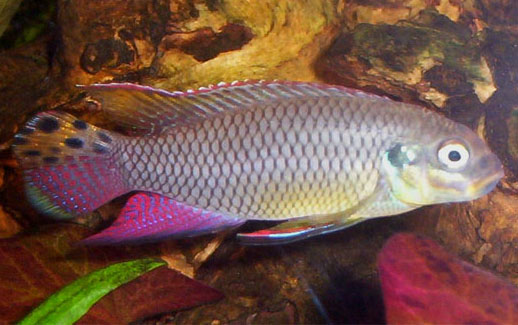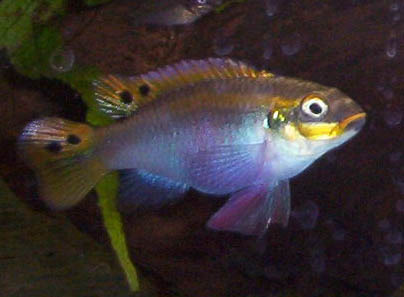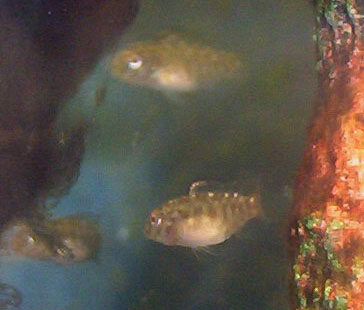Introduction

Most aquarists are familiar with the common krib (Pelvicachromis pulcher). Kribs are beautiful little cichlids and are, quite rightly, popular fish; but there are other members of the genus that are equally nice. One such species is Pelvicachromis taeniatus which comes in various geographical colour morphs; each named after a local town. The variety discussed here is “Moliwe”.
Distribution & Availability
A West African cichlid found in the rivers from Benin, eastwards through Nigeria and into Cameroon. P. taeniatus is not normally found for sale in shops though you may be able to get them ordered. Available sporadically by mail order and reasonably common amongst hobbyists.
Description
Males – noticeably smaller than P. pulcher with a maximum size of 9cm. The caudal fin is rounded and may have several eye spots. The scales have dark edges giving the body an attractive fish net appearance. The dorsal and anal fins have long extensions and the anal fin is a delightful shade of pink.
Females – up to 7cm. Equally as colourful as the male with a more distinct horizontal stripe. A beautiful bronze sheen dominates the upper half of female ‘Moliwe’. Females have a plumper, purple belly and rounder pelvic fins which are held close to the body.

Requirements
An easy fish to care for and entirely suitable for a planted community tank of peaceful fish. Although peaceful they are still cichlids at heart so one pair per tank only.
- Tank size: 90cm minimum
- Decoration: hiding places constructed from slate, bogwood and plants
- Temperature: 22 – 25oC
- pH: 6 – 8
- Hardness: not critical, 2 – 12odH
Feeding
Feed a variety of flake and frozen food. Offer a treat of live food once or twice a week.
Breeding
These fish breed easily and will breed in a community tank. For best results condition on live and frozen foods and give them their own 60cm tank. Decorate the tank with wood and rocks, make sure there are plenty hiding places. Provide one or two pots for spawning.
As with P. pulcher they will spawn in a cave and the female will guard the brood. The pair may fight so remove the male if this occurs. Parental care is of a high standard.
Fry can be fed on microworm and newly hatched brine shrimp. Growth is fast and the fry should be ready to move on at around 6 months.

Summary
Pelvicachromis taeniatus has all the advantages of P. pulcher in that it is small, colourful, peaceful and easy to breed. It deserves to be more popular.
References
how the habits of these fish coridoras! whether it difficult to care for her?
LikeLike
These little cichlids can live together with corydoras catfish with no problems. They are easy to care for.
LikeLike